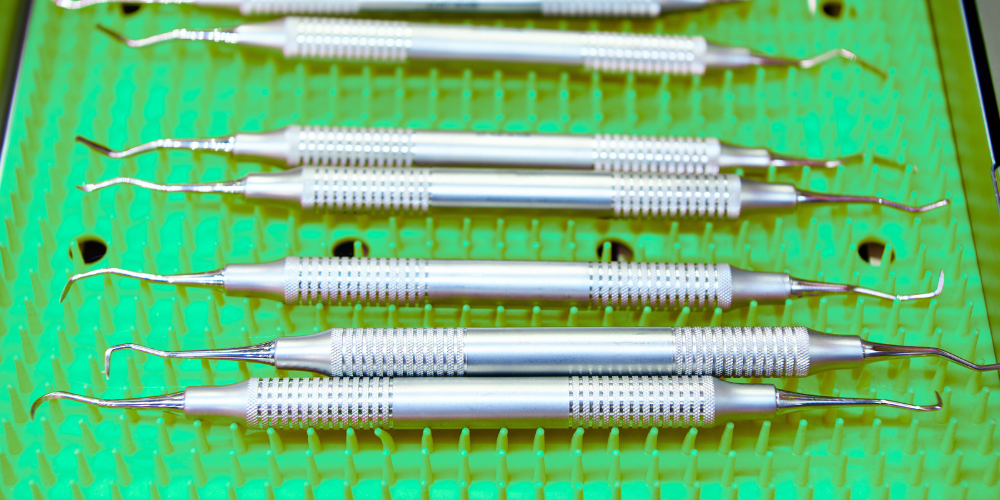
Table of Contents
Get Dental Catalogue PDF On Your Email
Which Gracey Curette Should I Use? Understanding the Numbers and Choosing the Right Type
If you’ve ever been unsure about which Gracey curette to use for scaling and root planing, you’re not alone. Many clinicians—especially new grads and hygienists—find it confusing to understand the differences between the numbered Gracey instruments and when to use them.
Gracey curettes are a staple in periodontal therapy and deep cleaning procedures. They are area-specific instruments designed to adapt to the complex contours of tooth surfaces, helping dentists and hygienists achieve precision during subgingival scaling.
This article will walk you through what each Gracey curette number means, when and where to use them, and how to make the best purchasing decision for your practice.
What Is a Gracey Curette?
A Gracey curette is a periodontal instrument with a curved blade and offset face, designed to remove subgingival calculus and smooth root surfaces. Unlike universal curettes, Gracey curettes are specifically designed to adapt to certain teeth or tooth surfaces.
Each curette has a unique number that identifies its intended area of use. The correct use of Gracey curettes can significantly reduce tissue trauma and improve the effectiveness of non-surgical periodontal therapy.
Gracey Curette Numbers Explained – Which One for Which Area?
Understanding Gracey curette numbers helps in choosing the right one for each treatment area:
- Gracey 1/2 and 3/4 – Anterior teeth (all surfaces)
- Gracey 5/6 – Anterior and premolars
- Gracey 7/8 and 9/10 – Buccal and lingual of posterior teeth
- Gracey 11/12 – Mesial surfaces of posterior teeth
- Gracey 13/14 – Distal surfaces of posterior teeth
- Gracey 15/16 and 17/18 – Mesial and distal with deeper access, often used for advanced perio
Each of these curettes has a unique shank design and blade angulation to reach specific areas efficiently.
Why Use Gracey Curettes Instead of Universal Curettes?
While universal curettes are versatile, Gracey curettes offer better access and adaptation for specific areas. This makes them ideal for:
- Precision root planing
- Deep periodontal pockets
- Minimizing tissue trauma
- More efficient instrumentation
If you want to browse a full selection of area-specific options, search our Gracey curettes crafted to Canadian quality standards.
Are Gracey Curettes Necessary for Every Dental Setup?
Yes—especially in periodontal practices or clinics that perform regular deep cleanings. Without area-specific instruments, access becomes limited, and effective debridement may be compromised.
Most dental setups should include at least:
- Gracey 1/2 for anterior
- Gracey 11/12 for mesial posterior
- Gracey 13/14 for distal posterior
You can buy Canadian Gracey curettes that are precision-engineered and made from high-quality stainless steel, ensuring long-lasting performance and patient safety.
What Makes a High-Quality Gracey Curette?
When buying Gracey curettes, look for:
- Medical-grade stainless steel
- Consistent blade angles and finishing
- Sharpened working ends
- Ergonomic handle grip for reduced clinician fatigue
At Carrot HCP, you’ll find top-tier instruments manufactured to meet the highest Canadian dental standards. Whether you’re a clinic in Ontario or serving patients anywhere across Canada, we offer premium-grade curettes built for daily use.
Tips for Maintaining Your Gracey Curettes
Proper maintenance extends the life of your curettes:
- Sharpen regularly to maintain edge integrity
- Avoid harsh sterilization chemicals that can corrode the metal
- Inspect for wear—especially at the working ends
If you’re looking to restock or upgrade, it’s a great time to search our Gracey curettes for options that match your clinic’s needs and budget.
Final Thoughts: Which Gracey Curette Should You Add to Your Kit?
Understanding Gracey numbers isn’t just about memorizing what goes where. It’s about using the right instrument for better ergonomics, better scaling outcomes, and better patient care.
Whether you need an entire set or just want to replace a single unit, you can confidently buy Canadian Gracey curettes from Carrot HCP—trusted by dental professionals across Canada.

